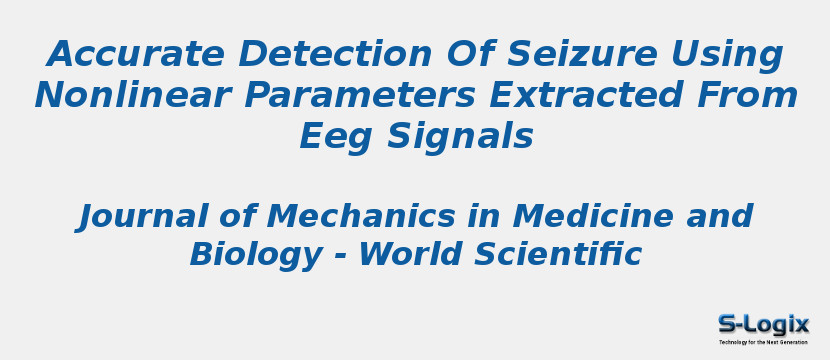Research Area: Machine Learning
Electroencephalography (EEG) is the graphical recording of electrical activity along the scalp. The EEG signal monitors brain activity noninvasively with a high accuracy of milliseconds and provides valuable discernment about the brains state. It is also sensitive in detecting spikes in epilepsy. Computer-aided diagnosis (CAD) tools allow epilepsy to be diagnosed by evading invasive methods. This paper presents a novel CAD system for epilepsy using other linear features together with Hjorth-s nonlinear features such as mobility, complexity, activity and Kolmogorov complexity. The proposed method uses MATLAB software to extract the nonlinear features from the EEG data. The optimal features are selected using the statistical analysis, ANOVA (analysis of variance) test for classification. Once selected, they are fed into the decision tree (DT) for the classification of the different epileptic classes. The proposed method affirms that four nonlinear features, Kolmogorov complexity, singular value decomposition, mobility and permutation entropy are sufficient to provide the highest accuracy of 93%, sensitivity of 97%, specificity of 88% and positive predictive value (PPV) of 94%, with the DT classifier. The mean value is the highest in the ictal stage for the Kolmogorov complexity proving it to have the best variation. It also has the highest 𝐹-value of 300.439 portraying it to be the best parameter that is favourable for the clinical diagnosis of epilepsy, when used together with the DT classifier, for a duration of 23.6s of EEG data.
Keywords:
Author(s) Name: JAHMUNAH VICNESH and YUKI HAGIWARA
Journal name: Journal of Mechanics in Medicine and Biology
Conferrence name:
Publisher name: World Scientific Publishing
DOI: 10.1142/S0219519419400049
Volume Information: Vol. 19, No. 01
